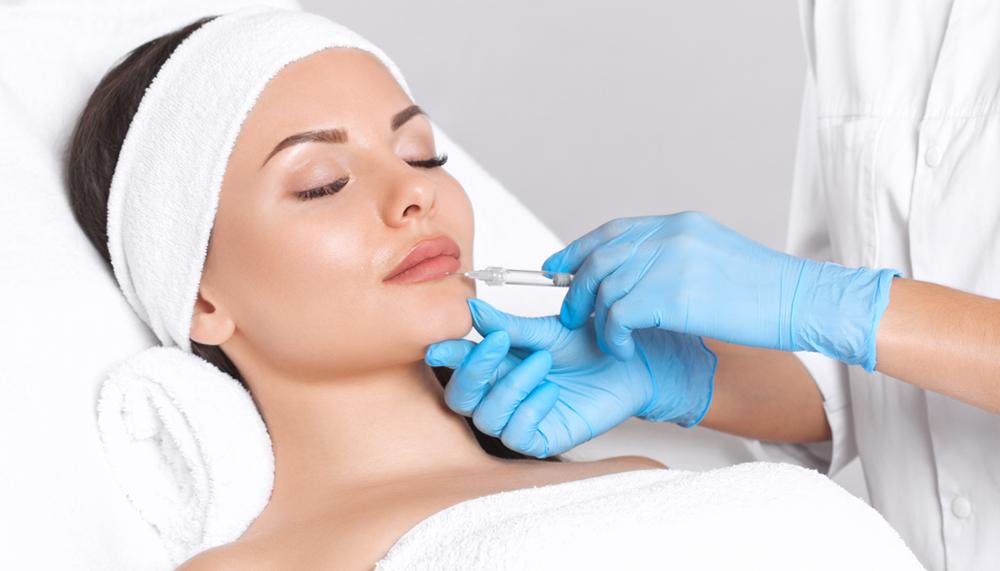At any given time, prospective clients are at different places on a journey toward an aesthetic purchase. Understanding what sets clients on the buyer’s journey and how you can encourage them toward their final destination (making a purchase at your aesthetic clinic or spa) has the twofold benefit of cultivating improved awareness of your clients’ needs and increasing revenue for your clinic.
However, it’s also vital to situate the cosmetic consumer’s journey within the wider context of what is taking place economically and socially. As we’ve seen during these past few years of the pandemic, the nature of the world has irrevocably changed, impacting the consumer’s journey in the process. As a recent Forbes article pointed out, consumers have always been the deciding factor for the success of businesses. Major global shifts that affect how consumers shop, such as Covid-19 or the recent economic downturn, should see businesses also pivot to reflect consumers’ changing needs.
Here’s the first in our two part RxPhoto guide to demystifying the cosmetic consumer buyer’s journey. We’ll also offer pointers in harnessing your knowledge of this process to convert more sales, increase revenue, and elevate customer experience.
What is the buyer’s journey?
The buyer’s journey is framed as a three–part process that a buyer moves through as they identify a need and become aware of a product or service that may address that need, evaluate it, and then make the decision to purchase.
Buyers don’t want to be openly prospected or pressured. They want to be able to access information that supplements what they already know, preferably from online sources, so they can formulate their own decisions before they’re ready to engage with people.
Your clinic or spa will benefit from developing specially formulated content and marketing to target each of the three stages in the buyer’s journey. We’lll unpack the three phases in detail and outline the ways you can target the buyer to maximize your opportunities, but first, it’s essential to understand why the buyers’ journey is so important.
Why is understanding the buyer’s journey so important?
Often, traditional marketing strategies are so intent on making a sale that they alienate potential customers or neglect to offer them the right information. The buyer’s journey focuses on providing solutions that can assist consumers through every phase of their decision-making process. Here are some of the most vital reasons why businesses need to understand this journey:
- The buyers’ journey encourages solution-focused marketing. Using the buyer’s journey is a great way to market your product or service by emphasizing how it solves a particular pain point or addresses a customer’s potential need. This solution-based marketing is often the most effective way to convert a buyer from prospect to customer.
- One critical consideration is asking and understanding how your buyers prefer to buy to inform how you structure your buyers’ journey content. The pandemic has affected how many people buy–even now as we move into a post-Covid world, people’s purchasing habits shift according to what’s happening in the wider social landscape, whether that’s quarantines, or the relaxation of restrictions, or the specter of economic fluctuations. By constantly asking your buyers what their preferences are (via online platforms) you’ll be well-placed to keep a finger on the pulse of their tendencies and adjust your strategy to mirror their preferences.
- Understanding the buyers’ journey also allows you to tailor your marketing and optimize it to each of the three phases in the buyers’ journey. For instance, a person in the awareness stage will benefit from educational content that dives into the possible problems they encounter or checklists to help them troubleshoot. A person in the consideration stage benefits from specific solutions to their problem, as well as testimonials, webinars, infographics, or differentiators that demonstrate how your company is better than your competitors. A person in the decision phase wants to be confident that your company is the best choice and can benefit from product reviews, case studies, or free trials to make the decision.
- Finally, the buyers’ journey helps you to build trust. Making a sale takes time. Trying to make your sale too soon in the sales funnel will only turn a potential customer away from your business. Instead, work on providing useful content that addresses needs during each specific stage of the decision-making process.For example, a client will spend a lot more time in the consideration or evaluation stage if they are thinking about a more costly and invasive treatment such as a brow lift. They will require more engagement and nurturing as they develop a relationship with your brand than a client contemplating Botox. This way, by the time the consumer is ready to talk to a surgeon or book a preliminary appointment at your clinic, they already recognize and trust your brand.
1. Awareness phase
In this first phase, the buyer develops awareness that they have a problem. He or she identifies a cosmetic or aesthetic issue that they want to resolve, and then determines how to prioritize this challenge or goal in terms of their time and finances.
Your role as a cosmetic or aesthetic clinic during this phase is to understand and appeal to prospective buyers who are in this early phase of seeking and gathering information.
For example, what language does the buyer use to identify and describe the issue they’re seeking help with? Understanding the buyer’s persona is vital, as it means you can create and optimize content with keywords that resonate with the buyer. It also means that you can help clear up any potential misconceptions they may have about their issue and how best to address it.
For example, buyers will most likely initially be seeking information using very accessible or basic language, such as “treatments for crows’ feet” or “botox for forehead”. The information you offer should therefore be accessible to potential clients but ultimately lead them to a place of expertise. For example, a blog post that talks about the obvious signs of aging in the face could culminate in specific treatment suggestions such as dermal fillers, botox, blepharoplasty or thread lifts. In other words, patients know that they have a problem they want to address, but they may not know what their options are for addressing it.
According to Adweek, 81% of consumers source educational content online to help them find a solution. Social media, engaging content, and pay-per-click advertising are just some of the new marketing methods you can employ to attract and engage consumers in this early phase of the buyers’ journey. Consumers turn to social media to make connections, have conversations, follow trends, and find product reviews or information–now more than ever in a post-Covid world. The most compelling way to capture their attention at this stage is concise and punchy SEO content in the form of blogs, social media posts, or even videos. Those who find your content useful or helpful will likely progress to the next step of the journey with your business in mind.
If we use the simple example of a buyer who wants to address their forehead wrinkles, blog posts that educate about the causes of forehead wrinkles along with a brief description of the range of possible treatments represent an ideal way to capture the buyer’s attention at this initial stage of the journey.
This kind of information is further enhanced if you include striking visuals that add value to what the buyer already knows. Visual aids, such as videos or images from your before and after gallery, offer a perfect way to showcase the effects of different treatments and also highlight the expertise of your clinicians.
Take a look at this excellent blog that educates prospective buyers on forehead wrinkles, why they occur, and outlines two simple straightforward treatments that can target forehead wrinkles in fifteen minutes or less. This blog is very short, providing buyers in the awareness phase with a basic overview of information that will help them move into the next phase–consideration, where they start weighing up their options in greater depth.
This blog also provides potential clients with a broad overview of all facial procedures offered by a cosmetic surgery clinic based in Alabama. Potential patients can read and learn about what each procedure offers, thus gaining information about what may (or may not) resonate with their needs.
2. Consideration phase
In the consideration phase, the buyer has defined their problem and begins researching options to solve it. This stage is defined by the buyer identifying or naming their goal or challenge, and committing to addressing it. They will then actively research or evaluate different methods or approaches in greater detail.
The role of cosmetic or aesthetic clinic in this phase is to ensure that buyers can easily access all the necessary information required to help them with weighing up the pros and cons of their potential options.
Let’s use the example of a consumer seeking a treatment for forehead wrinkles again. After moving through the awareness phase, the consumer likely knows that their options include a range of non-invasive, semi-invasive, and invasive procedures such as Botox, dermal fillers, facial acupuncture, or a brow lift.
He or she will then do their research to learn more about the pros and cons of each of the respective procedures, such as asking friends about their experiences, reading online reviews from other consumers, blogs or articles, or referring to the social media posts of aesthetic clinics. Based on what they learn, they will move toward evaluating the category that they feel best addresses their needs and priorities—for example, Botox or Dysport.
As outlined in the prior section, the first stage of the buyer’s journey should be focused on educating a potential client about what is available. In this second phase, however, you need to emphasize why specific solutions represent the best fit for their needs. Incidentally, you also need to highlight why some individuals may not be a good fit for your solution, as this helps safeguard customer retention and avoid a high churn rate of patients. Moreover, it represents good ethics.
For example, take a look at this blog that highlights the differences between Botox and Dysport. This article offers a wealth of information for a reader who has already moved past the awareness phase and decided that they want to undergo one of these non-invasive procedures to target facial lines. The blog provides explicit detail about how each product is suited to certain areas of the face and different types of lines.
Overall, this second phase of the buyers’ journey symbolizes the nurturing of a possible relationship with a client, establishing expertise, and developing trust between the buyer and your brand. At this point, customers are generally looking for content that highlights the best in the industry. The most effective content to target buyers at this stage of the journey are specialized procedural guides, live interactions or chat functions (for example, a qualified staff member available on your clinic’s Facebook page or website to answer questions), webinars, and comprehensive before and after galleries.
For example, check out this blog based on forehead before and after images, or this guide to non-invasive face sculpting procedures, complete with pros and cons.
3. Decision phase
In this final phase, the buyer uses the information they’ve gathered to settle on a solution in the form of a good or service. They may have created a pro and con list and decided on the solution that best meets their needs and priorities with particular attention paid to financial commitment and expected outcome.
So, going back to the previous example,our hypothetical buyer has decided after some research that Botox is their preferred method of addressing forehead wrinkles. However, they now need to settle on a clinic to undergo treatment.
What are the most important critical factors that measure in their decision to choose a clinic? Here’s where asking potential clients can be beneficial. You could use an Instagram or Facebook story to ask your buyers what factors figure most in guiding their selection of a clinic to help you craft content accordingly. For example, you could query clients or potential clients about the degree to which the following factors may influence their final decision:
- A free pre-Botox skin consultation or a consultation with a refundable charge if they proceed with the treatment.
- A fixed quote prior to treatment.
- An experienced and highly qualified aesthetician administering the Botox.
- Ease of scheduling or rebooking online (this was a big factor during Covid when appointments had to be postponed and rebooked or refunded with little notice).
- A guarantee of satisfaction or money back.
At this stage of the journey, buyers generally simply need a final push and call-to-action to encourage them to make a purchase decision. If your clinic has the right call-to-action, this can be the decisive factor in the client deciding to go with you. Effective content at this stage tends to be case studies featuring real people, trial offers and demonstrations. This also tends to be the stage of the buyer’s journey that is most saturated with marketing content, so make sure your offerings stand out from the crowd.
Here are some excellent examples of clinics executing Phase Three content well:
- A case study of a client who underwent Botox for forehead lines. This blog is particularly effective as it shows the difference in just one week and outlines how many units of Botox were used, allowing potential clients to gauge an idea of what results they may expect.
- This brief but effective case study offers the injector’s perspective on the most suitable approach for a client who requested Botox, thus highlighting their expertise. The case study also includes a testimonial, which attests to their satisfaction with the treatment.
The final word
The buyer’s journey represents one of the most effective tools you can use to delve into the psyche of your clients and help them as they journey from awareness, to consideration, to decision.
By defining and creating content for each stage of the buyers’ journey, your clinic will ensure you are capturing as many potential buyers as possible. Your awareness of this process allows you to subtly target and appeal to buyers as they move, often unconsciously, through each step of the journey. And most importantly, your clients also benefit as you are more equipped to meet or exceed their needs.
You Might Also Like
To attract repeat clients, must to remind them about the great service they've received. Too many clients are one-and-done — even if you have all their records in your EMR,…
Medspas offer a unique blend of medical and aesthetic services, combining elements of traditional spas with medical-grade treatments. Balancing clinical care with beauty treatments presents distinct organizational challenges, from managing…
Patients undergoing hormone replacement therapy rely on accurate and up-to-date records to give their providers important details regarding their health. Manual recordkeeping is tedious, time-consuming, and prone to mistakes. Electronic…





